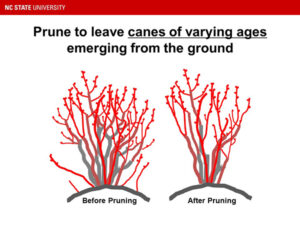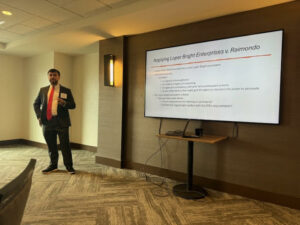
The Southeastern U.S. Vegetable Crop Handbook
The 2025 Southeastern U.S. Vegetable Crop Handbook All-in-one vegetable guide representing a joint effort among Extension Specialists and Researchers from 14 land-grant …



El inglés es el idioma de control de esta página. En la medida en que haya algún conflicto entre la traducción al inglés y la traducción, el inglés prevalece.
Al hacer clic en el enlace de traducción se activa un servicio de traducción gratuito para convertir la página al español. Al igual que con cualquier traducción por Internet, la conversión no es sensible al contexto y puede que no traduzca el texto en su significado original. NC State Extension no garantiza la exactitud del texto traducido. Por favor, tenga en cuenta que algunas aplicaciones y/o servicios pueden no funcionar como se espera cuando se traducen.
Inglês é o idioma de controle desta página. Na medida que haja algum conflito entre o texto original em Inglês e a tradução, o Inglês prevalece.
Ao clicar no link de tradução, um serviço gratuito de tradução será ativado para converter a página para o Português. Como em qualquer tradução pela internet, a conversão não é sensivel ao contexto e pode não ocorrer a tradução para o significado orginal. O serviço de Extensão da Carolina do Norte (NC State Extension) não garante a exatidão do texto traduzido. Por favor, observe que algumas funções ou serviços podem não funcionar como esperado após a tradução.
English is the controlling language of this page. To the extent there is any conflict between the English text and the translation, English controls.
Clicking on the translation link activates a free translation service to convert the page to Spanish. As with any Internet translation, the conversion is not context-sensitive and may not translate the text to its original meaning. NC State Extension does not guarantee the accuracy of the translated text. Please note that some applications and/or services may not function as expected when translated.
Collapse ▲
The 2025 Southeastern U.S. Vegetable Crop Handbook All-in-one vegetable guide representing a joint effort among Extension Specialists and Researchers from 14 land-grant …
The IRS recently announced a $0.03 increase for the optional standard mileage rate for business uses in 2025. The …

Last spring some growers in the North Carolina piedmont noticed unusual problems with their allium crops, primarily bulb onions, …

Blueberries are a popular crop for commercial farmers as well as home gardeners in North Carolina. They are fairly …
Nicholas Brown, an editor for Farm Law & Tax, recently gave a presentation at the 2025 N.C. Cooperative Extension State …
Starting a new business can be scary enough, and the last thing that any new business owner wants is …

In my first semester as an assistant extension professor at NC State University, I have been blessed with many …
It’s been a wild month for the Corporate Transparency Act (CTA) but as of today, the injunction against the …
December 26, 2024 UPDATE: On December 26rd, a merits panel on the Fifth Circuit Court of Appeals stayed the ruling …
December 26, 2024 UPDATE: On December 26rd, a merits panel on the Fifth Circuit Court of Appeals stayed the ruling …
Nicholas Brown, an editor for Farm Law & Tax, recently gave a webinar to extension agents associated with Virginia Tech. …
The Special Depreciation Allowance, commonly known as ‘bonus depreciation,’ will continue to sunset from 2024 to 2025, going from …
December 26, 2024 UPDATE: On December 26rd, a merits panel on the Fifth Circuit Court of Appeals stayed the ruling …
December 26, 2024 UPDATE: On December 26rd, a merits panel on the Fifth Circuit Court of Appeals stayed the ruling …

Nicholas Brown, an editor for Farm Law & Tax, recently gave a presentation at the 2024 Southeastern Academy of Legal …

On October 16, 2024, Gov. Cooper issued an executive order to increase the maximum calculable amount of weekly unemployment …
December 26, 2024 UPDATE: On December 26rd, a merits panel on the Fifth Circuit Court of Appeals stayed the ruling …
The IRS announced extensions for certain North Carolina residents and businesses. These extensions apply to residents and businesses in …

Prionus longhorn beetles, notably Prionus laticollis, Prionus imbricornis, and Prionus californicus (Coleoptera: Cerambycidae), pose significant challenges in agricultural and …

This publication describes the invasive Callery pear species, its offspring, and how it can harm …
This factsheet describes the biology of the cane lace bug or bamboo lace bug, Leptodictya …

This factsheet describes the biology of the banded sphinx moth or lesser vine sphinx, Eumorpha …

This factsheet describes the biology of the elm-grass root aphid, Tetraneura ulmi, and provides residential …

Gummy stem blight is caused by several closely related fungal pathogens in the genus Stagonosporopsis …

This vegetable pathology factsheet describes the identification and treatment of anthracnose in cucurbits.

Several species of grasshoppers can cause foliar feeding damage in tobacco. They are typically most …

This Extension publication provides an overview of the tobacco budworm (Chloridea virescens), a common pest …